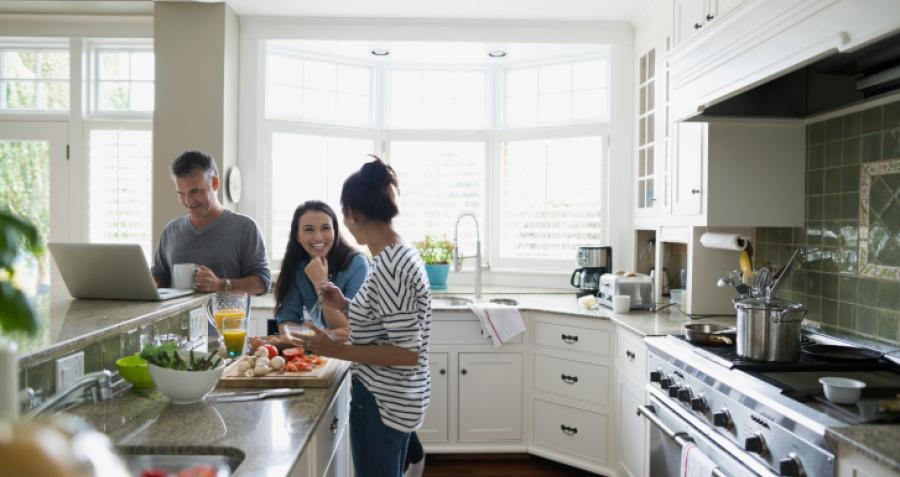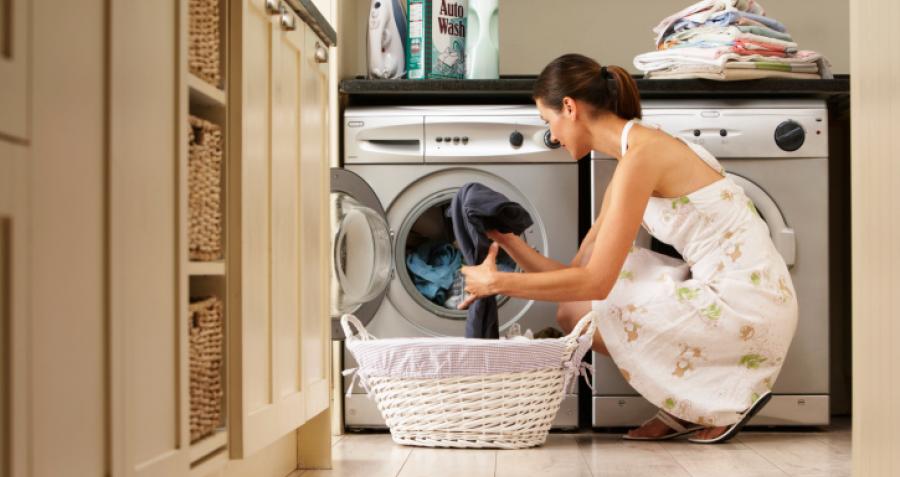August 2024
Making a few small changes to the way you use energy could make a difference to your next energy bill and improve your home's energy efficiency.
The family room

Switch appliances off at the wall
TVs, DVD players, computers, stereos and game consoles still use energy in standby mode. When not in use, switch these appliances off at the wall to save on energy bills.
Use a power board
A power board can supply electricity to multiple appliances at the same time and allows you to switch off all appliances using the same switch.
Use lamps or spotlights
If you only need a small amount of light, use lamps or spotlights instead of main lights.
Use energy-saving globes
Change your old light globes to compact fluorescent ones. Always consider upgrading to energy-efficient appliances where possible to help lower energy costs.
How many lights are on?
Turn off lights in the rooms you're not using.
The kitchen

Microwave oven
Thaw food in the fridge first to reduce cooking time. Microwaves use less energy than an oven. When using an oven, avoid continuously opening the door.
Using the stovetop
Keep lids on pots when cooking to reduce the amount of time and energy consumption. Dinner will be cooked faster, and your electricity bill will be lower too.
Boiling water
Use an electric kettle rather than the stove.
Dishwasher
Use the economy cycle for everyday washing and only run the dishwasher when it's full. This helps save water too.
Fridge and freezer
Set your fridge temperature to 4-5 degrees and your freezer temperature between -15 and -18 degrees Celsius. Keep fridges and freezers in a cool, well-ventilated spot away from the oven and the sun to save electricity. Keep a five-centimetre gap around your fridge so air can circulate freely.
The laundry

Washing clothes
Only run the washing machine or dryer on full load. Use cold water to wash clothes and spin them thoroughly before drying.
Drying clothes
Use a clothesline instead of a dryer wherever possible. Only use a dryer with a full load and when clothes are wrung well first. Clothes should never be placed in the dryer dripping wet. Keep the lint filter clean.
The bathroom

Use water wisely
Set the hot water temperature to 50 degrees Celsius. Installing water-saving showerheads in your home will reduce the amount of hot water and energy used. Shorten showers to less than five minutes to help reduce electricity bills.
Switch off appliances
Switch off appliances such as hairdryers, electric toothbrushes and radios at the wall.
Outside
Use timers and sensors
Use programmable timers and sensors to light outside areas.
Use solar power
Consider using outdoor solar lights for your garden or outdoor areas.
Separate your lighting
Separate the lights so you can choose which areas to light.
Cooling and heating
Reduce your need for cooling and heating devices
Close the doors to unused rooms to reduce the area you need to cool or heat.
Keep curtains and outside window shades closed to reduce the amount of energy needed to maintain a consistent temperature inside.
Rather than heat your bedroom, add another blanket to your bed or use an electric blanket, wheat bag or hot water bottle.
Look after your cooling and heating systems
Clean your air conditioner or cooler so it doesn't use as much energy to run. Turn off your cooling or heating overnight and when you're not home.
Keep these tips in mind for efficient energy use. Moreover, comparing offers from different electricity and gas retailers can also help you find better rates and save on electricity costs.



